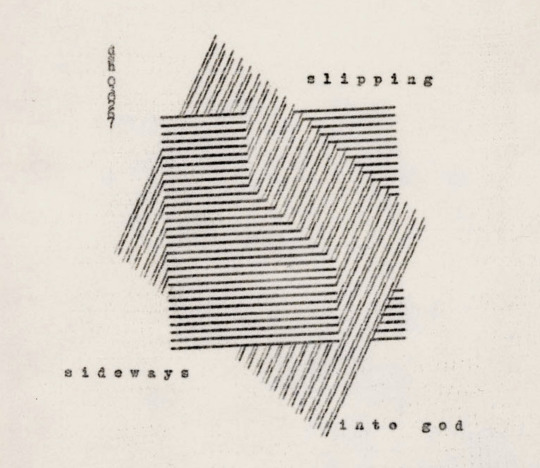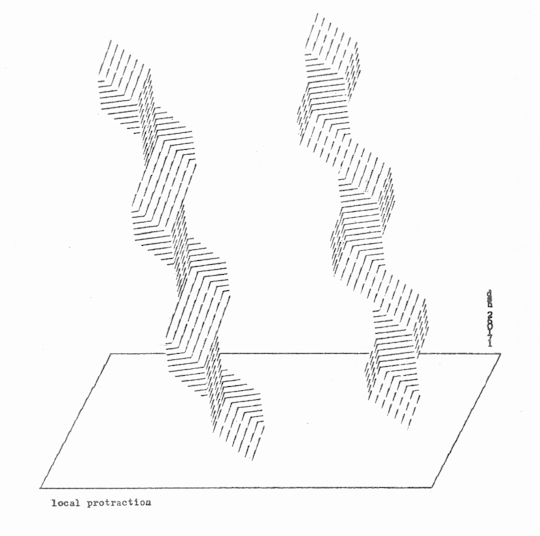#dom sylvester houédard
Text

«Stereo Headphones» – an occasional magazine of the new poetries, No. 5, 'The New Visual & Photo Poetries of Japan', Edited by Nicholas Zurbrugg, Kersey, Summer 1974, Edition of 515 [room 3o2 books, Ottawa]
Issued in 2 variants: (i) 500 trade copies; (ii) 15 numbered copies on handmade paper with signed extras by Dom Sylvester Houédard, Ernst Jandl, and Maurizio Nannucci
Cover Art: photograph by Okazaki Katsuhiko
Contributors: Charles Amirkanian, Jean-François Bory, Thomas A.Clark, Bob Cobbing, Peter Finch, Ian Hamilton Finlay, Raoul Hausmann, Dom Sylvester Houédard, Yutaka Ishii, Isidore Isou, Ernst Jandl, Okazaki Katsuhiko, Litasono Katué, Takeshi Koike, Robert Lax, Peter Mayer, Neil Mills, Ito Motoyuki, Maurizio Nannucci, Seiichi Niikuni, Mimmo Rotella, Tsuji Setsuko, Takahashi Shohachiro, Shimizu Toshihiko, Shohji Yoshizawa, Nicholas Zurbrugg
#graphic design#art#poetry#concrete poetry#visual poetry#magazine#cover#magazine cover#stereo headphones#nicholas zurbrugg#dom sylvester houédard#dsh#ernst jandl#maurizio nannucci#room 3o2 books#1970s
34 notes
·
View notes
Text
A visual poem is one that must be seen to be fully understood, where the verbal and visual draw strength from each other to produce greater meaning. As such, visual poetry invites us to consider not just the typographic elements of verse—the shape of letters, the spaces between words, the overall composition of a page—but also the poetic potential of images.
In our workshop on visual poetry we followed a progression of ever more acutely visual forms, from technopaegnia (a tradition of “shaped poems,” of which George Hebert’s “Easter Wings” is an oft-cited example) to asemic writing, where the semantic function of language is removed entirely, as in works by mIEKAL aND or Rosaire Appel. Defining a collage-centric lineage of intermedia practices from Dada to Lettrism to Situationism and Fluxus, we lingered on specific works with roots in those traditions: the “typewriter poems” of Dom Sylvester Houédard, Sarah J. Sloat’s diagrammatic erasures augmented by collage, the swirling “tangle of language” in Ava Hofmann’s “[A woman wandered into a thicket],” the typographic abstraction of Andrew Topel’s “Black on White on Black,” and Tony Fitzpatrick’s multimedia collages, with their densely layered personal and social iconographies. We also discussed several visual artists who employ text, among them Ray Johnson and Deb Sokolow, whose work, while not necessarily poetic in intent, nevertheless contains some gnomic inscrutability that seems to tune our awareness to the frequency of poetry.
As with any practice that operates across arbitrary borders of medium and technique, the possibilities offered by visual poetry can make a blank page extra intimidating. The following prompts were inspired by questions from workshop participants, and each represents a potential starting point for exploring the intersection of words and images.
Prompt 1: Diagram a sequence
Choose a diagram you find visually interesting. Instruction manuals and science textbooks are an excellent source.
Remove or cover all the labels and captions.
Now consider something you wish would happen. What are the steps between here and there? What does the end result look like?
Describe each on a sheet of paper. Be as florid as you like.
Cut out each “step” and assign it a position on the diagram. Don’t think too hard about this part.
For inspiration, see Nance Van Winckel’s Book of No Ledgeor Flat-Pack by Anney Bolgiano.
Prompt 2: Visualizing voices
Start a collection of interesting words or phrases cut out of newspapers and magazines.
Choose one of these at random (draw from a hat, or close your eyes and pick one up). Paste it down in the center of a piece of paper.
Now choose the cutout that feels most like a response. Where does it belong in relation to the first? Does it agree? Disagree? How would that look visually—is it close or far away? Intersecting? Overlapping? Think about the different voices implied by differences in typography. Is the reply louder? Quieter? Paste it in place.
Repeat, with the phrase that seems to respond to what you just pasted down. Keep repeating.
For inspiration, see the work of Douglas Kearney.
Prompt 3: Finding images in letters
Start a collection of large text: newspaper and magazine headlines, chapter titles.
Cut out individual letters or words.
Now choose some of the most interesting letterforms and slice them further, vertically and/or horizontally.
Put several of these into your hands, a bag, or a hat, and shake them up. Drop them onto a blank sheet of paper.
Glue a few of these down where they landed. Now begin filling in the gaps, finding points of connection. Try to think of these as purely visual objects.
For inspiration, see the work of Geof Huth and Cecil Touchon.
Prompt 4: Score an event
Choose a situation that involves a series of repeating events or gestures. This could be a sporting event, the traffic passing by your window, the sounds you hear in a cafe.
Observe for a few moments in order to choose 6 to 16 “events” that are likely to recur. Design a mark or symbol to represent each event. For example, if you are watching traffic, create symbols for cars, trucks, motorcycles, bicycles. Consider how you can represent the direction a vehicle is traveling, its color or sound.
Decide on a time frame you’ll observe and divide a sheet of paper into units. For our traffic example, we could sample ten minutes by drawing ten lines on a sheet of paper.
Observe, using your system of symbols to record events as they occur.
For inspiration, see the drawings of Lee Walton or Rosaire Appel’s “Unsettled Scores.”
Prompt 5: Simple asemic writing
Coat the palm or side of your dominant hand with ink, paint, or graphite.
Now hold an imaginary pencil and write about a memory you don’t want to forget. Aim for five minutes, replenishing the ink or graphite at the end of each stanza or sentence.
#visual poetry#poetry#visual arts#visual language#poets#visual poems#writing prompts#prompts#writing exercises
0 notes
Photo

Get it @theconcernnewsstand !! #Repost・・・Brand new, in store / online, a good one for poets & graphic artists alike: Concrete Poetry, a book that features the semipermanent collection of concrete poetry from 1960's ++ at the Musee D'Art Moderne et Contemporain (MAMCO Geneva). The collection features important figures such as Ian Hamilton Finlay, Augusto and Haroldo de Campos, Dom Sylvester Houédard, John Furnival, Maurizio Nannucci, Franz Mon, Ruth Wolf-Rehfeldt, Natalie Czech, Julien Blaine, Jean-François Bory, Pierre and Isle Garnier, Bob Cobbing and Richard Kostelanetz. . . #concretepoetry #mamco #geneva #collection #poetry #graphicarts #stevenleiber #paulbernard #gabrielledetterer #maurizionannucci @mamco_geneve https://www.instagram.com/p/CdNy5qfuRvK/?igshid=NGJjMDIxMWI=
#repost・・・brand#concretepoetry#mamco#geneva#collection#poetry#graphicarts#stevenleiber#paulbernard#gabrielledetterer#maurizionannucci
0 notes
Photo




Dom Sylvester Houédard (British, 1924 - 1992)
“A practicing Benedictine priest and noted theologian, Houédard, also known by his initials ‘dsh’ or ‘the Dom,’ wrote extensively on new approaches to art, spirituality and philosophy, and collaborated with artists such as Gustav Metzger, Yoko Ono and John Cage. His works that often incorporate language and known as ‘typestracts’, (dsh's friend Edwin Morgan coined this term “a combination of “typewriter” and “abstract,” are made with the use of ubiquitous ink ribbons blue, black and red), are made using an Olivetti Lettera 22.”
from Lisson Gallery artist page dedicated to Dom Sylvester Houédard
249 notes
·
View notes
Text
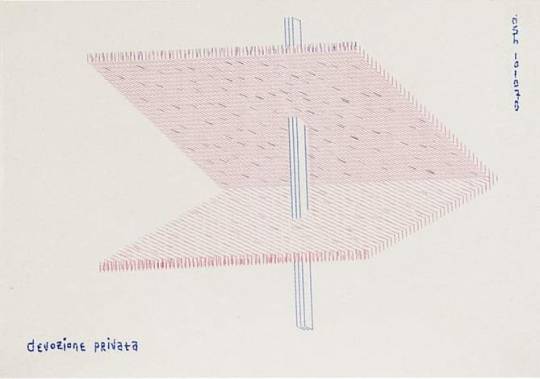
- Dom Sylvester Houédard, devozione private (dsh 101070), 1970, mecanografía sobre papel. Colección del Pérez Art Museum Miami. Foto: Sid Hoeltzell
17 notes
·
View notes
Photo

by dom sylvester houédard
lisson gallery currently (2 may – 16 june 2018) presents the first new york show of concrete poet, visual artist, writer and benedictine monk, dom sylvester houédard (1924–1992) and its first solo exhibition of his work for almost 50 years.
142 notes
·
View notes
Photo


From: concrete poetry: gloup and woup, Edited by Bob Cobbing, Arc Publications, Gillingham, 1974
(via konkretpoesi)
#graphic design#typography#art#poetry#concrete poetry#visual poetry#geometry#pattern#portfolio#dom sylvester houédard#dsh#bob cobbing#arc publications#1970s
47 notes
·
View notes
Text

Dom Sylester Houédard - “thalamus bride-chamber/sol sun,” 1964.
0 notes
Photo

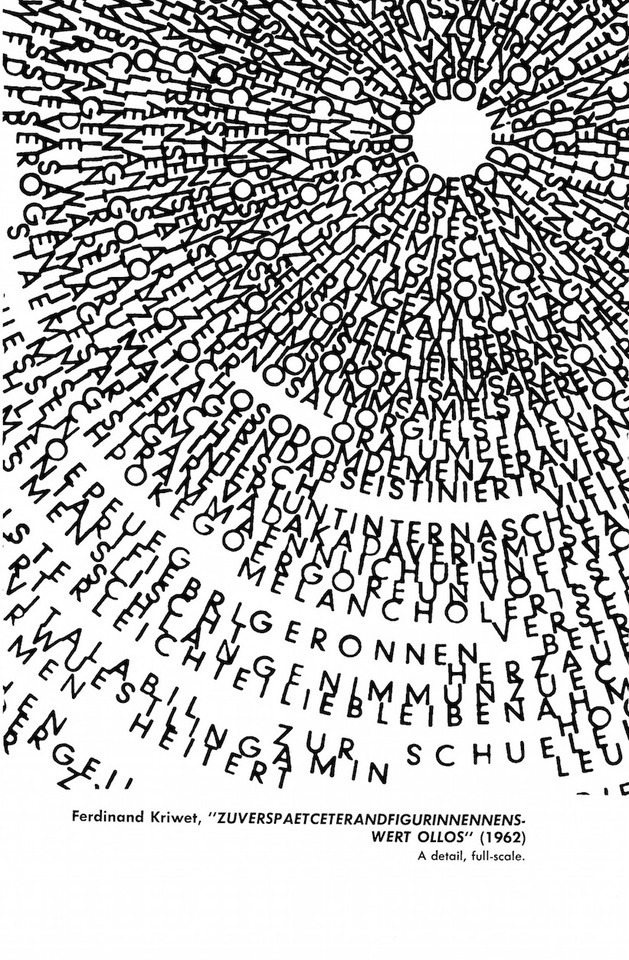

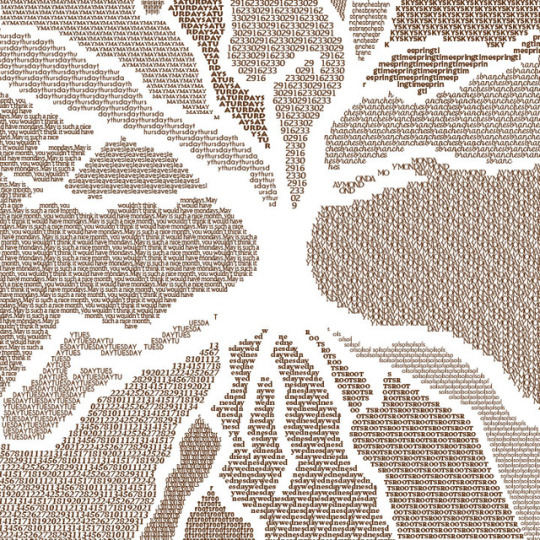
Dom Sylvester Houédard
Further research into concrete poetry and I found this artist. I really enjoy how detailed the images he creates out of words.
Dom Sylvester Houédard, also known by the initials dsh, was a Benedictine priest, theologian and noted concrete poet.
2 notes
·
View notes
Photo



ToCall No.12 is a special issue we are celebrating the heroes who are inspiring us - these heroes who enable us to continue and expand the traditions - these heroes we admire and keep so alive... Just like we do with the creation of ToCall magazine! it features works by 18 artists and poets.
The one-word poem on the cover is typewritten by psw and based on a poem by dom sylvester houédard (dsh), appeared on the cover of Tlaloc issue no.7.
The magazine is printed with a mimeograph duplicator Gestetner 320 on old typewriter paper made in GDR.
Mimeo printed edition of 100 copies – buy here
1 note
·
View note

